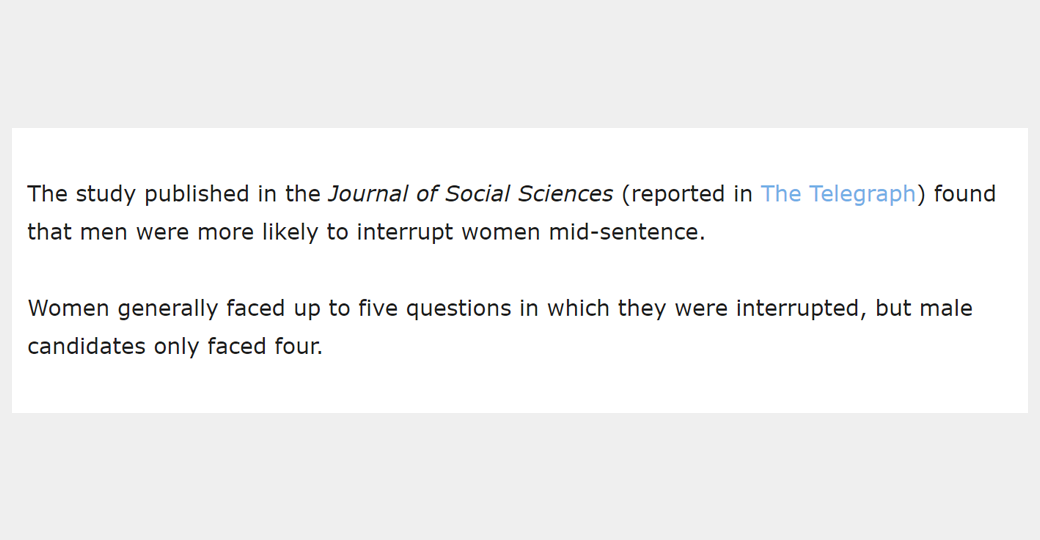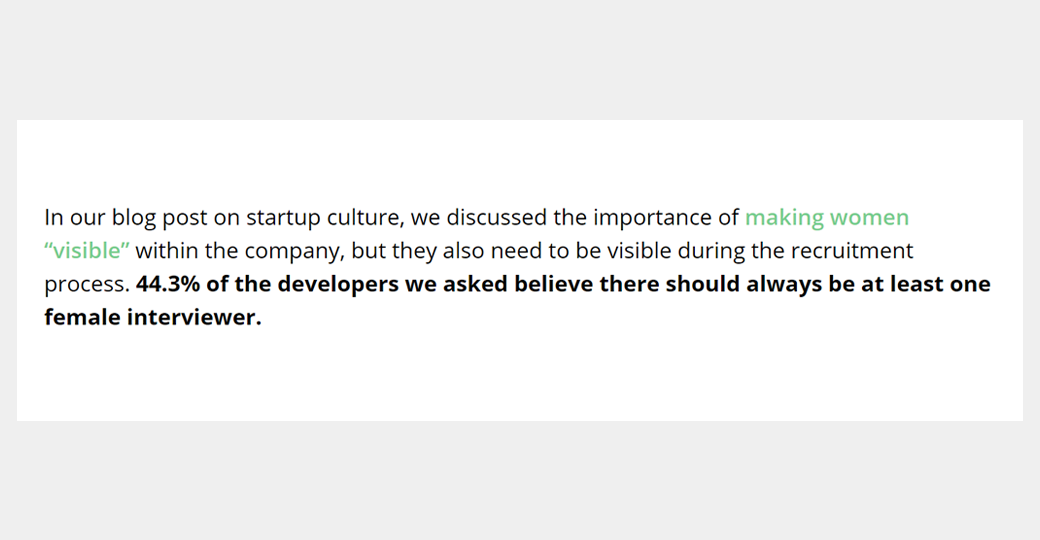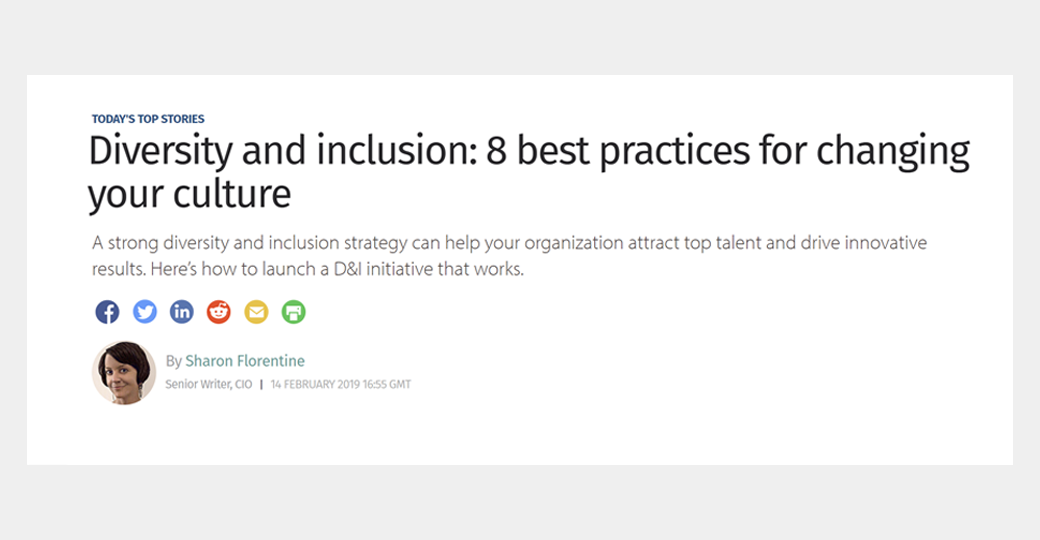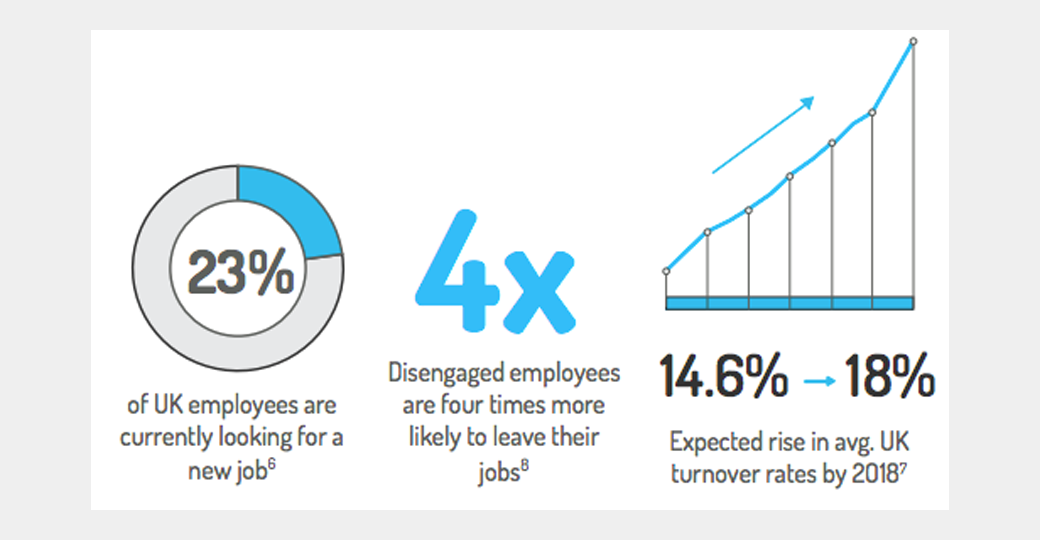I’ve noticed something pretty interesting over the past 6 months…
…demand for Rust developers and the Rust programming language has gone through the ROOF.
Which really peaked my interest.
The Rust coding language first started to appear in 2010; while it’s quite a new language, it has been around for some time. So why has the boom seemed to have happened in the past 6 months?
Funding a crypto start-up has dramatically changed this year too – we investigated how crypto start-ups manage their funds in this article.
Let’s put this into perspective:
Plexus has seen an increase of 300% for developers with Rust skills in 2021 (so far), compared to the WHOLE of 2020.
 Taken from Plexus’ internal data
Taken from Plexus’ internal data
I wanted to find out exactly what had caused this.
So, we got to work.
We went to the market to find out why so many Blockchain and Crypto companies were looking for developers with Rust experience, and why this demand had come about so recently.
We spoke to companies like Polymath, t3rn, Anmol, Dialectic AG, Dock.io, Panther Protocol and Nym Technologies to get their expert insight on the topic.
On a side note: We recently released a DeFi Hiring Report, which talks about salaries, trending job roles and how long it takes to hire, you can download that here if you think it may provide some value.
In this article you’ll find out if Polkadot has impacted Rust’s growth, why Rust is so sought after and what makes Rust an amazing language for Blockchain and Crypto projects.
Let’s get into it:
Why would a Blockchain company choose Rust as their programming language?
One thing was made very clear to me early on:
Developers absolutely LOVE Rust as a programming language (and if you’re a developer looking for a new role, you can find loads at Blockchain and Crypto companies here).
But anyway:
This was one the more memorable quotes from our market research:
“If Rust was a girl, I would’ve married her.”
Furqan Ahmed from Anmol
That tells you all you need to know really. But that’s not all:
The following reasons repeatedly came up when asking decision makers in Blockchain companies why they chose Rust as their primary programming language:
- Great for security
- Very functional
- Super memory safe
- Tells you in real time if there will be problems
- The error codes and fixes are well documented
The problem is, there’s way more demand for Rust developers than there is actual Rust developers.
To combat this, we found that it’s quite common for founders and decision makers to bring people onboard and then upskill them in Rust. That’s just how much demand there is for those Rust skills.
Adam Dossa, the CTO at Polymath detailed his experience in upskilling developers internally:
“As we move from an Ethereum focused company to a Substrate focused company, we’ve upskilled existing Solidity Developers internally to learn Rust.
We’ve had a number of developers transition internally, and the feedback we’ve received so far is very positive – there seems to be a real desire to learn Rust at the moment. Developers seem to really enjoy the language. There is a relatively steep learning curve, but there are good resources online to combat that, and we’ve done internal training programs too.”
The willingness for companies like Polymath to hire developers and upskill them in Rust really shows the distance between supply and demand at the moment.
Adam then went on to compare the current state of the Rust market to the Solidity market around 3 years ago, when there was a lot of demand but not a lot of experience.
I thought it was an interesting comparison to make.
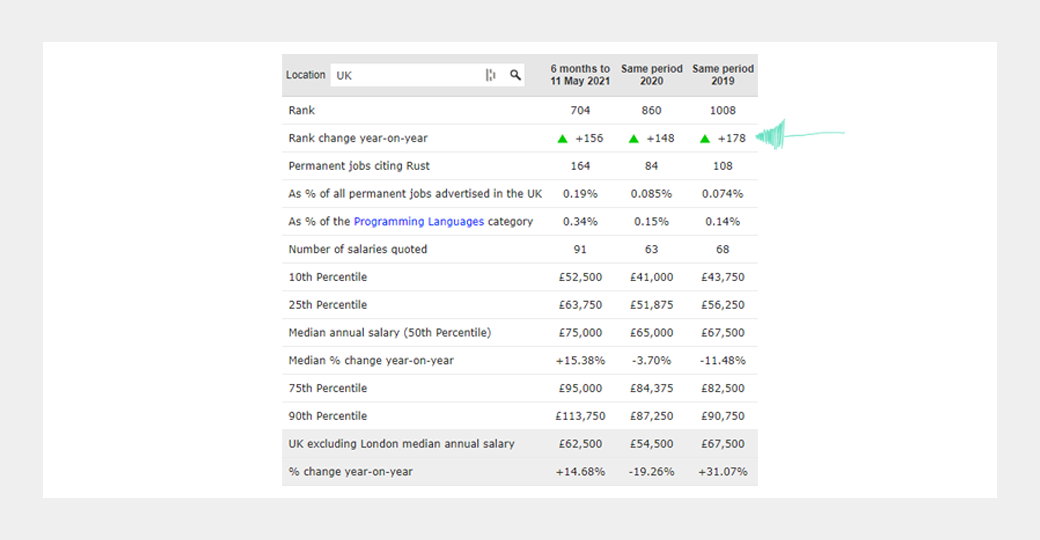 Rust demand in the UK by itjobswatch
Rust demand in the UK by itjobswatch
But that’s not all:
Alessandro Buser, the Lead Blockchain Developer at Dialectic AG detailed exactly why he chose Rust as their main programming language:
“I made that decision on my own; Rust is the language that I’m most familiar with and have the most experience with. On a developer level, it’s a very good language to work with because it’s so enjoyable and very modern.
It also improves a lot on usability; the compiler is very precise in telling you what’s wrong with the code. That allows you as a developer to think more about the code, because all of the basic problems you could make in your code are discovered by the compiler. That removes a lot of the brain power needed for the basic stuff and allows you to think more about the architecture and the code itself.”
That’s a pretty glowing review.
With so many companies making the decision to move to Rust, I wanted to find out what other languages they had considered using:
C & Go are the only other languages teams seem to consider
Although GoLang & C++ did come up quite frequently in our research…
…the general feedback we got from Blockchain companies is that they hadn’t seriously considered any other programming language. What they wanted to achieve and the project they were working on ultimately made the decision for them.
Nick Lambert, the CEO at Dock.io talked us through their decision making process:
“For us, it was never a question of whether we were going to use another language instead of Rust, it was more about what Blockchain are we going to develop on? We started out using Ethereum, but it’s hugely congested, hugely expensive, and hugely volatile with its fees.
Ultimately, we decided that Blockchain was not going to be fit for purpose, and we had to pick another one. Parity’s Substrate enables you to build your own Blockchain within their framework and that was exactly what we decided to do.”
The feeling we got from the people in the space was that there really isn’t another option which compares with Rust for Blockchain projects.
Go was mentioned, but the unpredictability of the performance was a concern for the developers.
In direct contrast, speaking to the market really highlighted this:
Rust’s security and stability works really well for a Blockchain/Crypto project
We mentioned at the start that it was clear to us that developers LOVE working with Rust as a programming language for Blockchain and Crypto projects.
Nearly everyone we spoke to mentioned that:
- The performance is great
- The security is amazing
- It’s hard to make mistakes
Comments like this were a common theme throughout our research process.
Jacob Kowalewski the CSO at t3rn explained to us what makes Rust such a good language for Blockchain projects:
“In Rust, when I say functional, I mean it’s quite hard to mess it up. It’s robust, functional and makes a lot more sense for building Blockchain products. It’s a language which is really well aligned with the purpose and needs of Blockchain – which is security and stability.”
Security and stability is something which comes up repeatedly when discussing Rust.
Anish Mohammed from Panther Protocol also highlighted the importance of security in smart contracts and DeFi:
“The difference between traditional finance and decentralised finance is the legal contracts that bind the two parties. If a contract fails in traditional finance, you can always go back and make adjustments, but in DeFi, it’s a one way function. Once it’s done, it’s done.
This fact means we have to be really careful in the code that we write, which is why language security is so vital.”
This point really stuck with me.
One of the biggest benefits to smart contracts and DeFi could also cause a lot of problems if not carefully constructed and managed well. There’s no edits, amendments or adjustments you can make once the smart contract has been deployed.
This is why Rust is built to highlight any errors at the source.
Dave Hrycyszyn, the CTO at Nym Technologies put the benefits to us frankly:
“Most other languages allow you to write code that fails spectacularly, the program will still run, but it will fail at the user end. Rust enforces a bunch of guarantees in the language itself, and tells you what to do and what not to do.
It also has the best WebAssembly support out of any of the languages.”
This was not the first time WebAssembly had been brought up.
A lot of the time, smart contracts are executed in WebAssembly, and as the smart contract space continues to grow, it’s only natural that Rust follows that upwards trend.
But the question still begs:
Is the rise of Polkadot the reason for Rust’s growth?
The thoughts on this were pretty split down the middle.
My colleague William Hogan actually put out a poll on LinkedIn to see what his network thought:
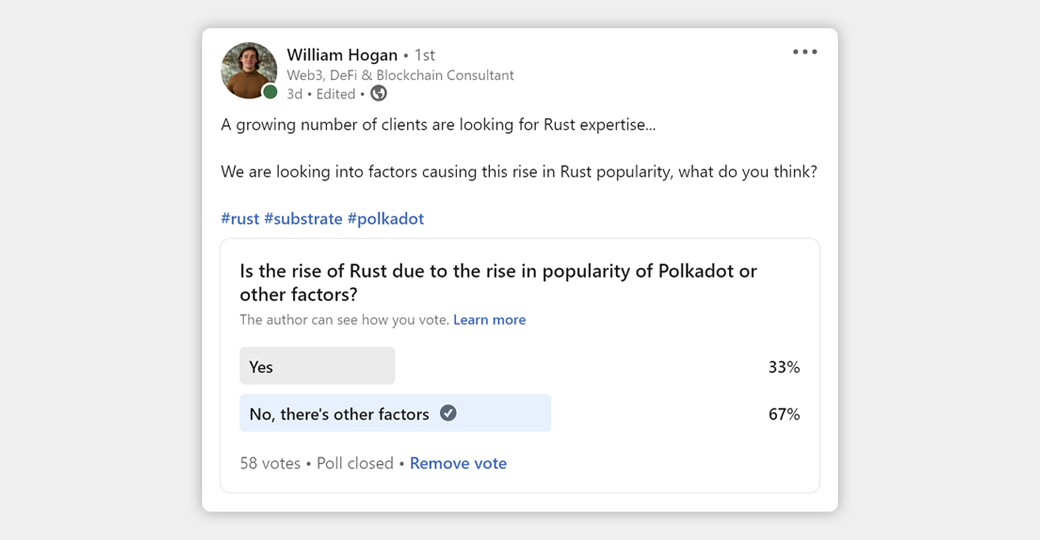 William Hogan on LinkedIn
William Hogan on LinkedIn
That gives you a pretty good idea on the general consensus of William’s network.
The initial thoughts from the majority of our office was that yes, the rise in popularity of Polkadot has resulted in more demand for developers with Rust skills.
But it seems to be a little more complicated than that.
It’s important to point out our knee jerk reaction may very well have been biased. We work exclusively in the Blockchain space, so naturally our knowledge of Rust outside of Blockchain and Crypto would be reduced.
Speaking to people working with Rust and people hiring Rust developers has given us a clearer view of the reason behind the rise in popularity.
When we asked this question, some people immediately pointed out some of the big tech companies using Rust:

Dropbox, Coursera, Microsoft, Discord and Facebook all use Rust in some capacity.
Amazon also joined the Rust foundation.
So it’s probably safe to say that these huge companies are seeing what Blockchain and Crypto companies are seeing: Rust is a great alternative to C++, but with much better safety guarantees and better performance.
This indicates that the increased demand of Rust isn’t because Polkadot has become more popular, it’s because Rust is simply a great programming language.
Seems like a pretty level headed thought process to me.
But on the other hand:
Jacob Kowalewski, the CSO at t3rn gave Polkadot a little bit more credit:
“I think Polkadot has had a big impact on Rusts growth. Polkadot has come onto the scene with a different offering than Ethereum, which is really appealing to talented developers. There are really solid projects being built on Polkadot that have caught the attention of talented developers and a lot of them are starting to take notice and realise that Blockchain and Crypto is here to stay. This means that Rust has to be learned to get into the Polkadot space.”
Jacob makes a great point.
Blockchain and Crypto projects have been steadily gaining momentum, and the wider development community is taking notice.
Rust seems to be becoming one of those languages you’ll need to learn to get a strong foothold in the space. Especially if you want to futureproof yourself.
I do understand the counterpoint though.
Some people will be hesitant to give all the credit to Polkadot, as Rust is a seriously impressive language in its own right, and it’s popular because of that fact.
That means only one thing:
Rust will continue to grow and improve
A good indicator that Rust will continue to rise in popularity is that universities have started bringing it into their courses.
This means that in a couple of years we’ll naturally start seeing the number of junior developers with Rust experience increase.
Alessandro Buser, the Lead Blockchain Developer at Dialectic AG outlined the future of Rust really well:
“It’s going to go up, and up only – a lot of the big tech firms are starting to focus more on Rust. It’s moving out of Mozilla and it’s now fully open source – which makes it easier for bigger companies to integrate with. Rust is also starting to take over some of the applications that were written in C++ – this is because it’s easier for a C++ developer to move into Rust. This growth will continue as more customer focused products utilise WebAssembly”
Speaking to all of these experts in the space made one thing very clear to us:
Developers love working with Rust.
And to prove this point even further, there is literally tons of articles outlining exactly why:
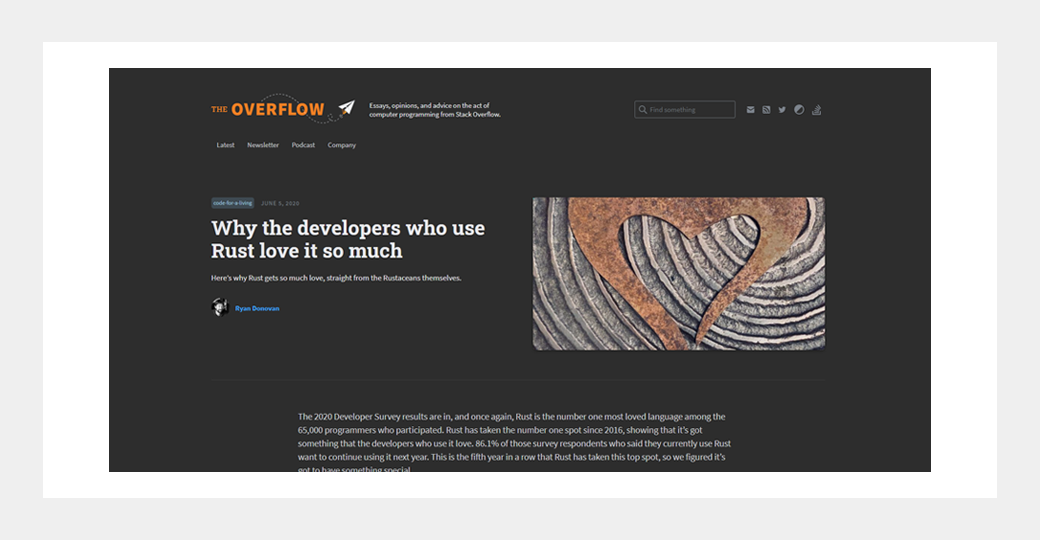 From StackOverflow
From StackOverflow
So if we throw everything else to the side and only consider how the developers feel, you’d anticipate that the language would still continue to grow.
The amount of word-of-mouth marketing that this language has is pretty crazy too.
As we mentioned in the intro, demand for developers with Rust skills has increased by 300% in 2021 (so far), compared to the WHOLE of 2020. That isn’t something that happens by chance.
I hope this article provided some unique insight into the relationship between Rust and Polkadot from experts who work in the space every day.
It’s difficult to say that the sole reason Rust has become so popular is because of the rise in popularity of Polkadot.
BUT:
At the same time, we know that Polkadot would’ve been a contributing factor.

Dominic Lang
Hey! I love working with DeFi Scale Ups, and focus specifically on Web3 and Crypto. Connect with me directly on LinkedIn to see more content just like this.

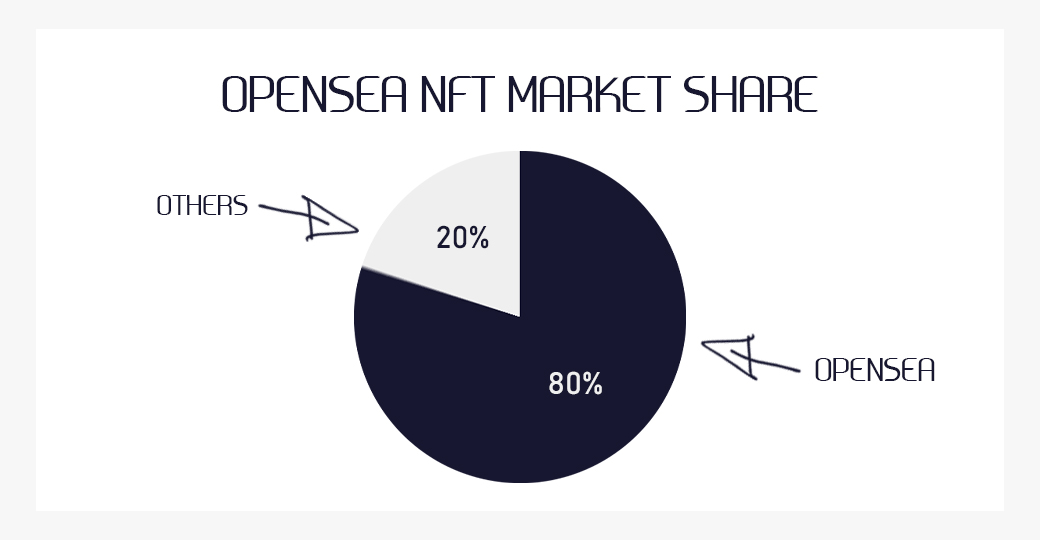
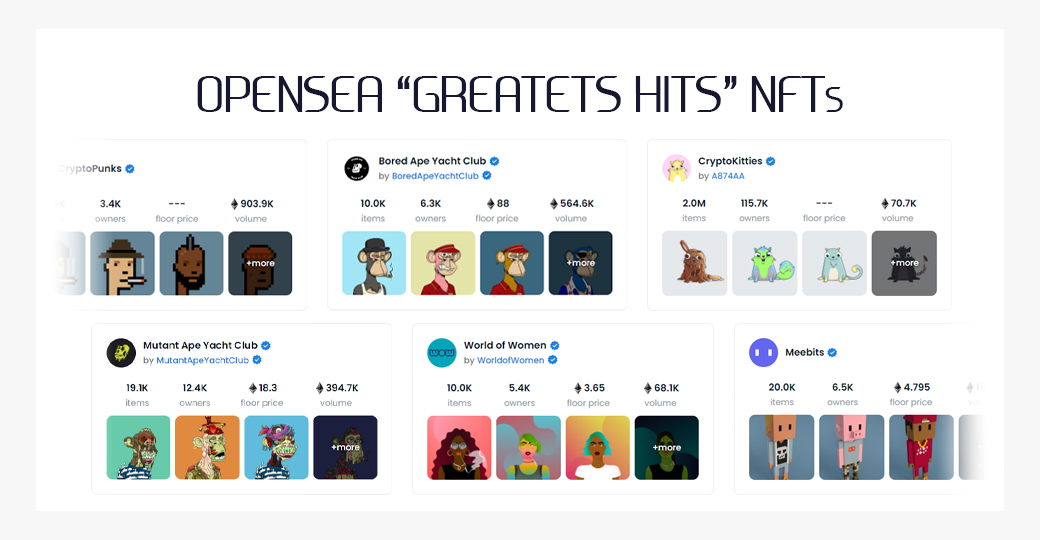
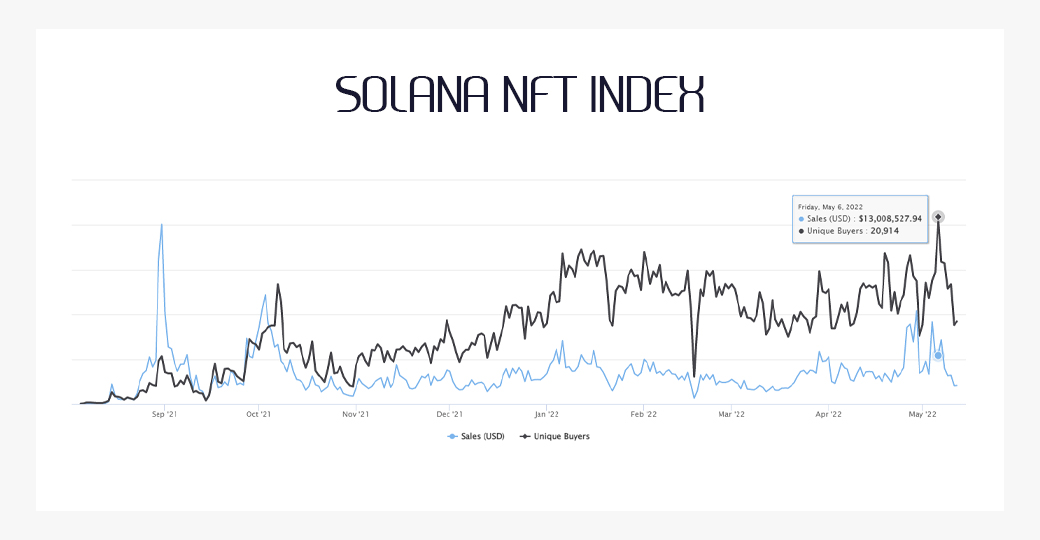
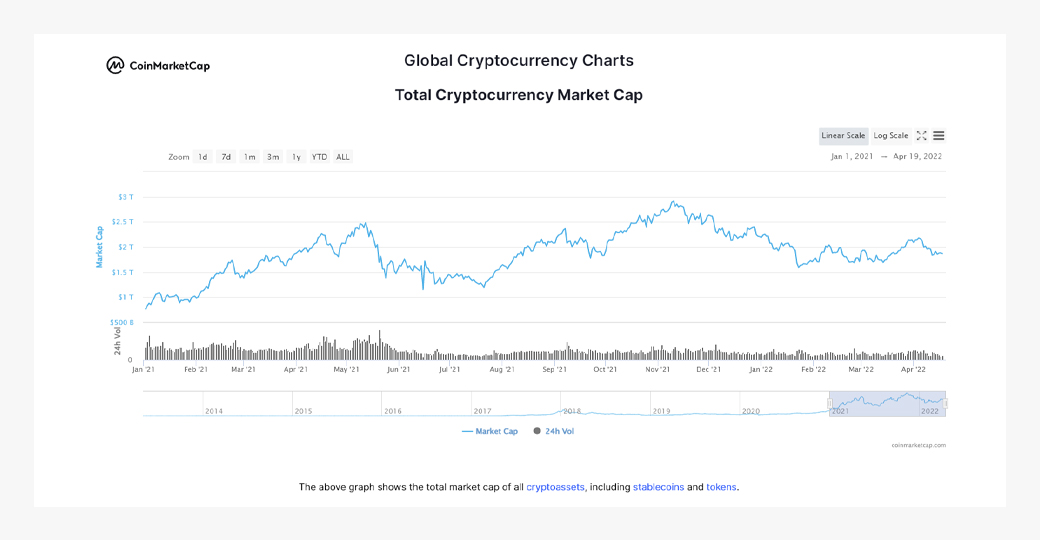
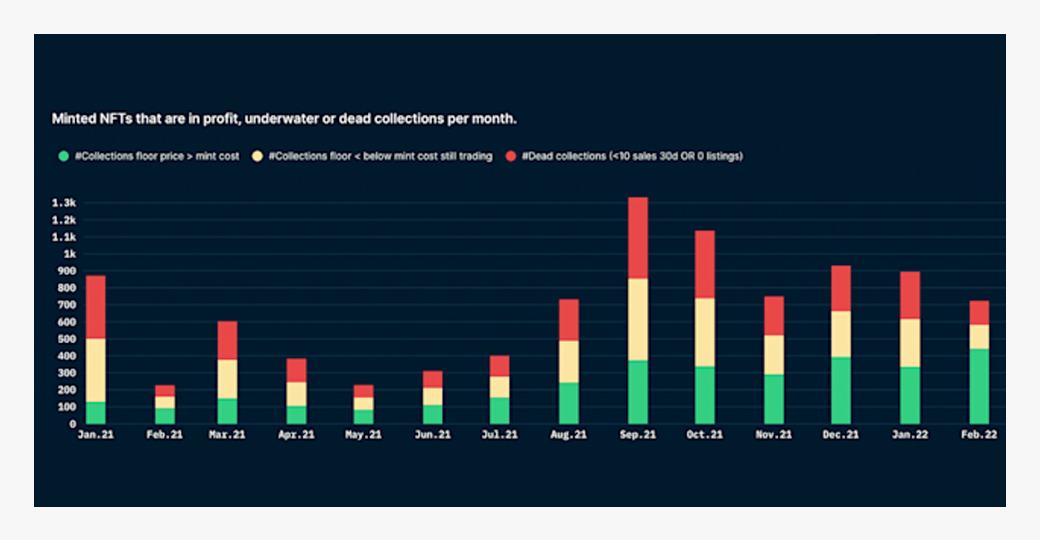


 xe.com
xe.com tradingeconomics.com
tradingeconomics.com tradingeconomics.com
tradingeconomics.com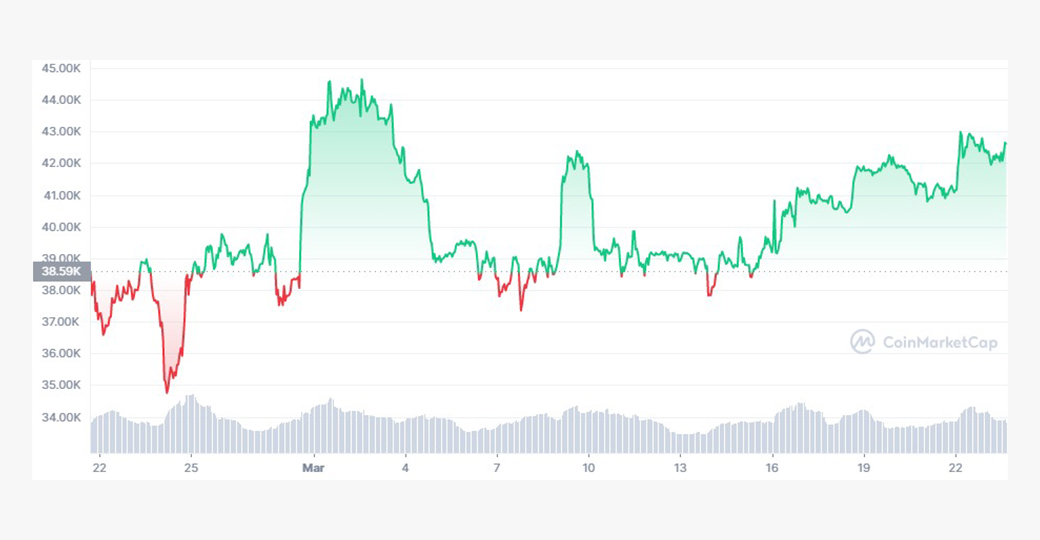 coinmarketcap.com
coinmarketcap.com



 itjobswatch.co.uk
itjobswatch.co.uk Data taken from the
Data taken from the  itjobswatch.co.uk
itjobswatch.co.uk
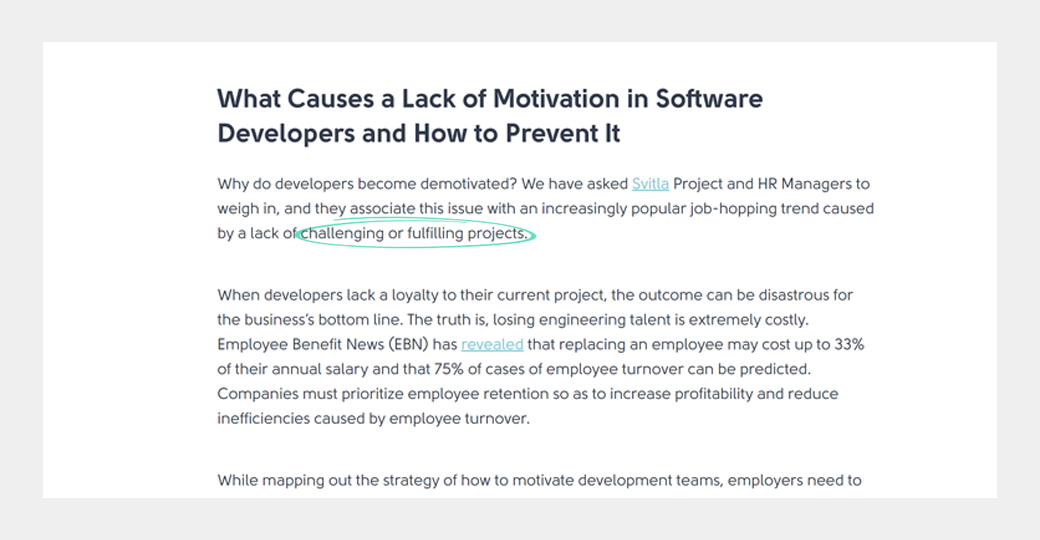
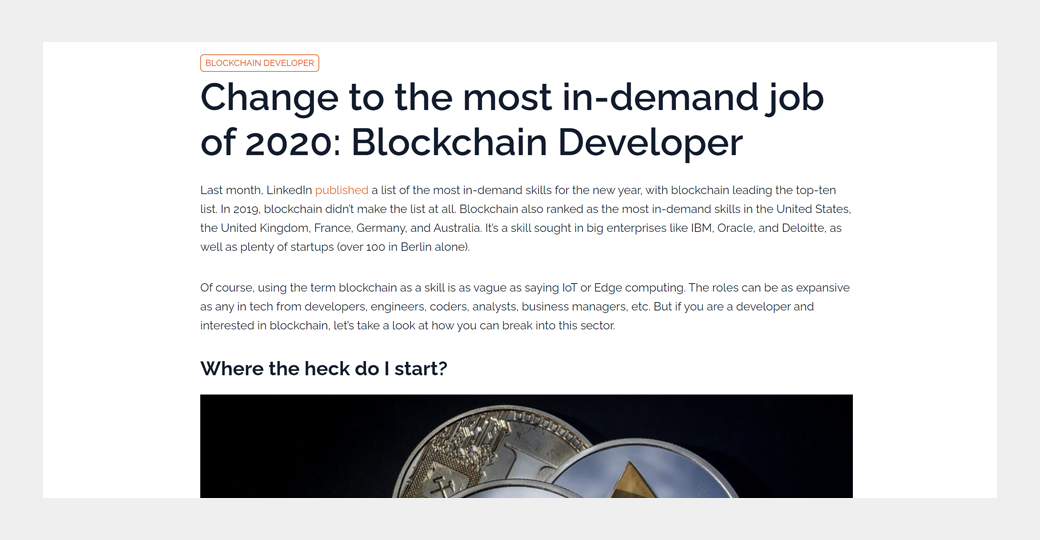

 Companies consulted for our research
Companies consulted for our research Treasury holding options
Treasury holding options Hired.com
Hired.com
 Taken from Plexus’ internal data
Taken from Plexus’ internal data Rust demand in the UK by
Rust demand in the UK by 

 From
From 
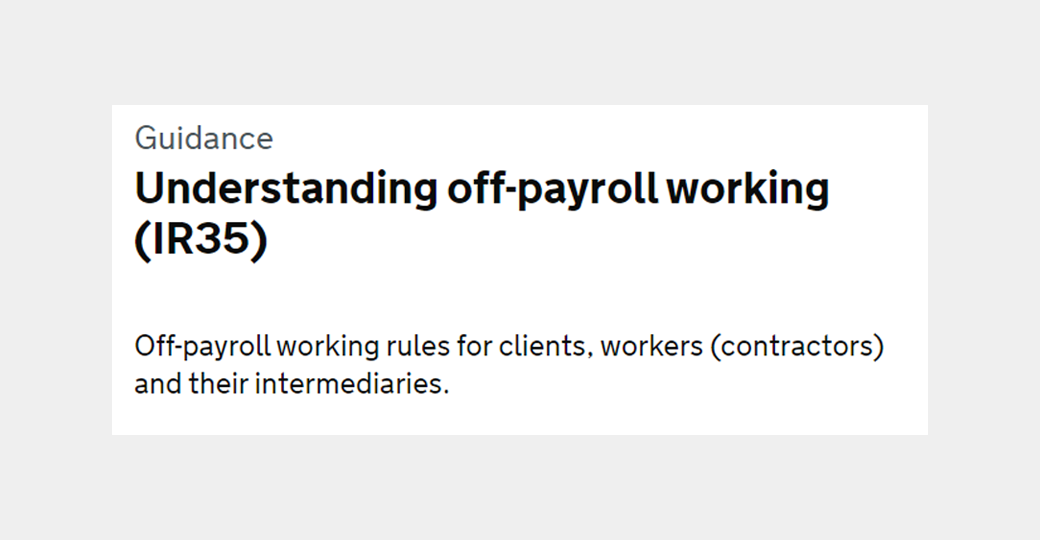
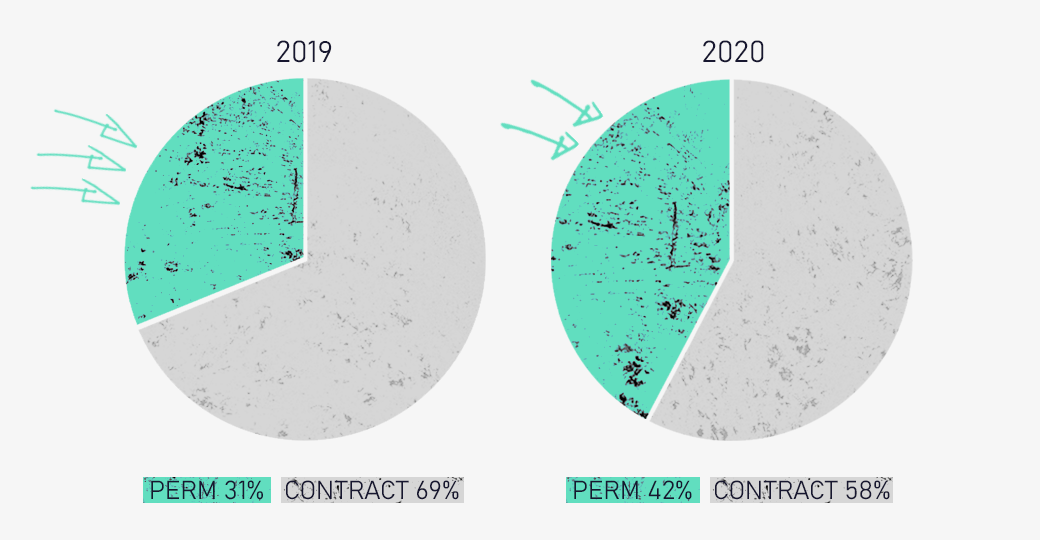 Internal data from Plexus
Internal data from Plexus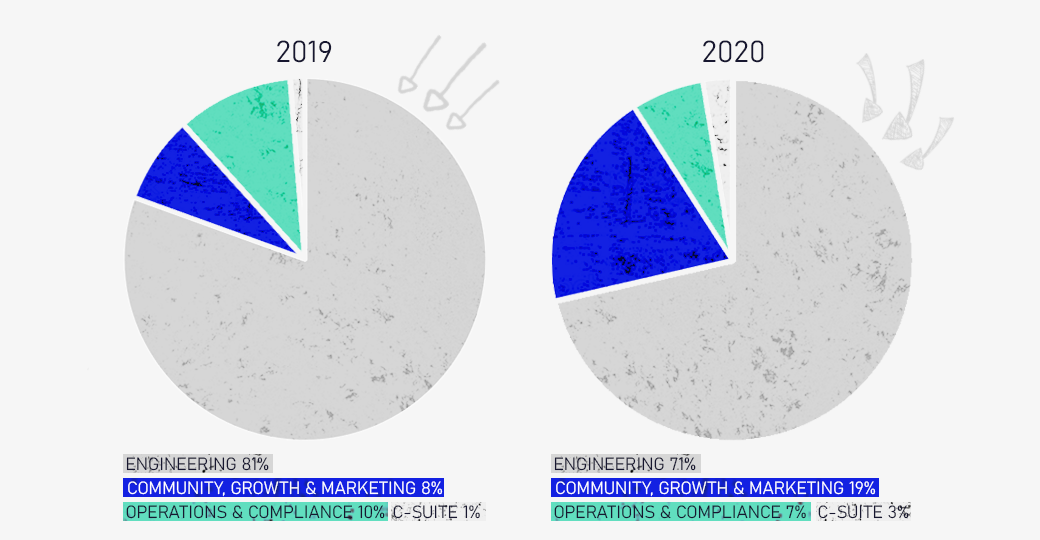 Internal data from Plexus
Internal data from Plexus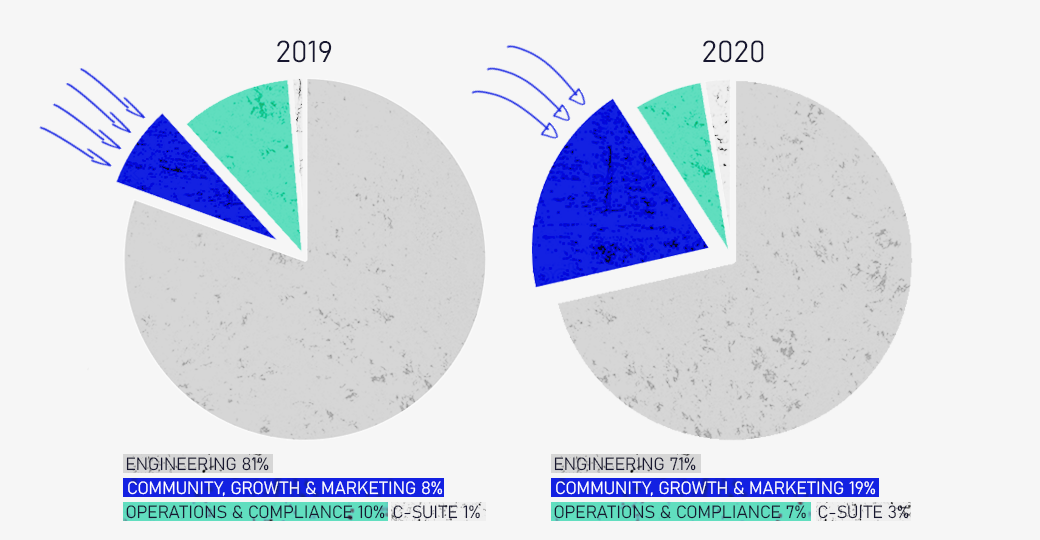 Internal data from Plexus
Internal data from Plexus




